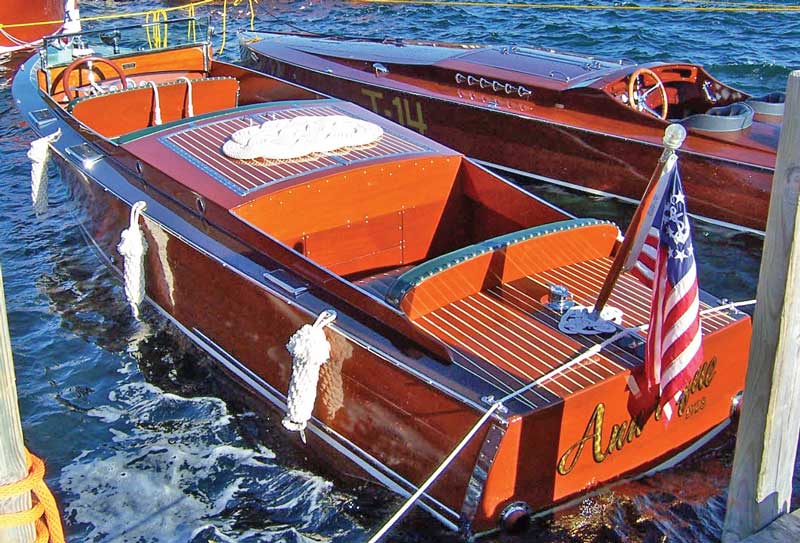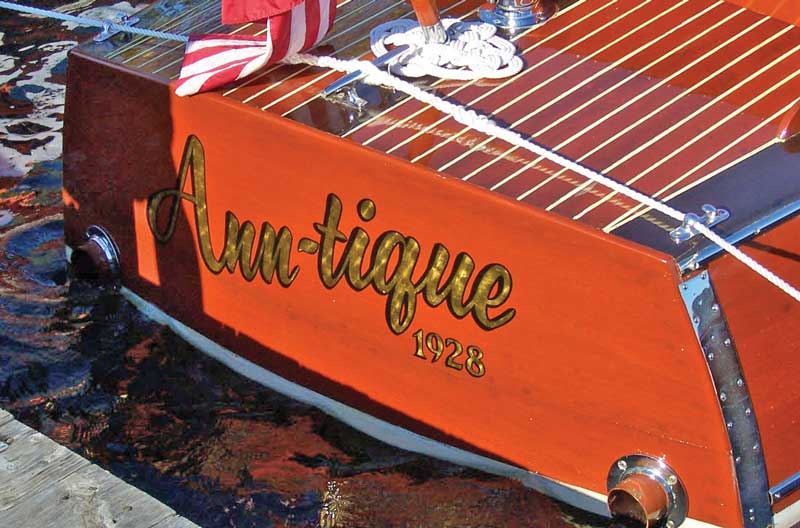The St. Pete Boat Show is big. Really big; biggest boat show on the Gulf Coast. It’s over 40 years old and has seemingly endless rows of floating docks, each full of boats. There is a fair selection of trailer boats, but it is mostly a show of slip-berthed cruisers and yachts.

There is covered parking and a well-signed entranceway to the show from it. It is a very enjoyable show and well managed. From center consoles to yachts, all the brands were there.
Now here is a classic that I was introduced to by attending the St Pete Boat Show.
In the roaring 1920s, Chris-Craft’s popular 22-foot triple cockpit runabouts were called “Cadets” in the company’s sales literature. Although Chris-Craft produced around 1058 of the 22-footer hulls over four years (1927-1931), few are in the level of condition now that would be considered show quality. Technically, only the 1927 model year speedboats were labeled “Cadet” by Chris-Craft, but all four years of this model are now commonly called “Cadet” in the classic boat crowd.
They are an even 22-feet overall in length with a beam of six feet and a freeboard at the bow of 29 inches and the aft at 18 inches. The weight for these triple cockpit runabouts is around 2800 pounds. Various engines were installed over these years, but I think that they were around 100 to 110 hp. These are old engines even after they are rebuilt, and old engines simply have old engine problems. This Cadet speedboat has a modern small block V-8 and therefore both a higher cruise and top speeds. This also makes for a very usable runabout. But this replacement of a modern engine effects judging in a classic boat show.

The bottoms of the original runabouts were made up of two layers of planking with a canvas layer in between. The modern restoration of the bottoms uses 3M5200 as the bedding layer between the two layers of bottom planking. This updated bottom better deals with higher speeds, both at cruising speeds and wide-open throttle. Again, a change that makes for a more usable and durable boat at the speeds that the V-8 provides.
This boat used batten-seam boat hull construction. Each plank is fastened to each batten and each frame. Batten seam construction is certainly more authentic in classic Chris-Crafts.
Now let’s share some Chris-Craft history:
The story begins in a small town in Algonac, MI. It was here that 13-year-old Christopher Columbus Smith built his first boat in 1874. In 1910, the Smith-Ryan Boat Company was formed.
In 1922, the Smith-Ryan Boat Company changed its name again, and so the Chris Smith & Sons Boat Company was formed.
Then, Gar Wood bought into the company.
In 1923 Chris Smith and his sons separated themselves from Gar Wood and decided to operate their own boat building company under the name “Chris Craft Boats.” Chris Smith wanted to build a full line of stock boats on a production system to reduce costs and make them more affordable. He was convinced that promotion, advertising, and high volume were the keys to achieving his goals.
Next Chris Smith renamed it “Chris Craft Corporation.” The Chris Smith family (with some partners along the way) owned the company from roughly 1874 until 1960.
After several owners, Erwin Jacobs (Genmar) became the owner. That business sold to Stellican for 10 million in 2001. Stellican sold to Winnebago in 2018 for 522 million.
By Chris “Seabuddy” Brown